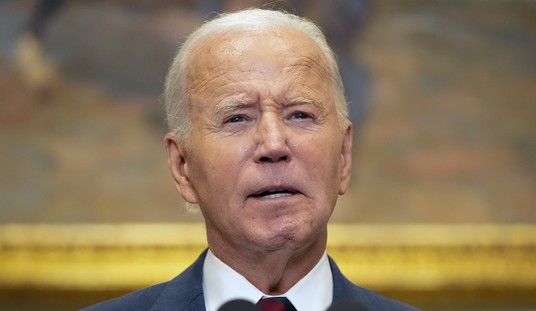Some capsized battleships at Pearl Harbor still had men trapped inside their hulls. Stephen Bower Young wrote a book titled Trapped at Pearl Harbor, detailing the rescue of 32 sailors from the battleship Oklahoma. One survivor, Robert D. West, died aged 82 in 2002.
He had been trapped in utter darkness for more than 30 hours, and the fear of it never wholly left him. His daughters wondered for years why the veteran always slept with a small light on to the end of his days. Later they understood: “They had been trapped in pitch darkness, and I think that never totally left him,” according to West’s daughter, Diane.
West and several sailors scrambled around the steel hull as it flipped over and found themselves in a compartment with a foot of air above their heads. They dove out of that enclosure and made their way upward — toward the bottom of the ship where they waited, banging with wrenches on the bulkhead to signal they were alive.
After hours of repeated pounding, he finally heard an answer.
Rescue workers, who had begun cutting through the ship’s double bottom the morning of the attack, were systematically working their way through the bowels of the capsized vessel searching for survivors.
As water began lapping at the entombed sailors’ feet, the rescuers started cutting a hole just above where West and another sailor sat.
The five weakened, oil-soaked sailors were lifted out and guided through an escape route. At 2 p.m., the day after the attack, they finally saw daylight.
But if 7 decades is too far a span in time to recover the experience, the Pearl Harbor ordeal was re-endured a few months ago by by Harrison Okene, the Nigerian cook on an oil company tugboat that was capsized by a huge wave in the Atlantic ocean. It lay upended on the bottom a hundred feet below the surface, where Okene was trapped in an airpocket, listening to fish eat his dead shipmates, subsisting on Coca-cola.
There he waited in darkness for three days until salvage divers sent to recover the bodies found him. Whereas the World War 2 generation did not have body cameras, today’s divers do. So we have the actual underwater video of his rescue.
[jwplayer config=”pjmedia_richardfernandez” mediaid=”33435″]
One cannot help but wonder how many sailors have met the fate of West and Okene without the experience of rescue. What’s it like to wait entombed, alone, at the literal bottom of the ocean? Okene, like West, was similarly marked. Relatives have said that he awakes at night afraid terrified he is falling, sinking into depths.
We know from his own testimony that he had to fan the flames of hope alive.
According to his interview with the Nation: “I started calling on the name of God. … I started reminiscing on the verses I read before I slept. I read the Bible from Psalm 54 to 92. My wife had sent me the verses to read that night when she called me before I went to bed.”
He survived off just one bottle of Coke, all he had to sustain him during the trauma.
Okene really thought he was going to die, he told the Nation, when he heard the sound of a boat engine and anchor dropping, but failed to get the attention of rescuers. He figured, given the size of the boat, that it would take a miracle for a diver to locate him. So he waded across the cabin, stripped the wall down to its steel body, then knocked on it with a hammer.
But “I heard them moving away. They were far away from where I was.”
And then the diver came and Harrison was saved.
Men returned from the darkness are sometimes puzzled by the mystery of their own survival. In the 1993 movie Fearless, a plane crash survivor finds himself unable to re-enter into the normal world again, but is compelled to continuously ask himself: is he really alive? And can he really die?
Having your life nearly taken from you and then unexpectedly returned emphasizes not only the uncertainty of death, but the capriciousness of life. Before any of us die, we are first alive. And why we live is really as big a mystery as the puzzle of death. We are already on the other side of a great unknowable. The question is, what do we do with it?
December 7, 1941 was the day that killed thousands. It was also the moment that gave Robert West the chance to live 61 more years. Herman Melville in Moby Dick uses the story of Jonah as a metaphor for the need to go on.
As we have seen, God came upon him in the whale, and swallowed him down to living gulfs of doom, and with swift slantings tore him along ‘into the midst of the seas,’ where the eddying depths sucked him ten thousand fathoms down, and ‘the weeds were wrapped about his head,’ and all the watery world of woe bowled over him. Yet even then beyond the reach of any plummet–‘out of the belly of hell’–when the whale grounded upon the ocean’s utmost bones, even then, God heard the engulphed, repenting prophet when he cried. Then God spake unto the fish; and from the shuddering cold and blackness of the sea, the whale came breeching up towards the warm and pleasant sun, and all the delights of air and earth; and ‘vomited out Jonah upon the dry land;’ when the word of the Lord came a second time; and Jonah, bruised and beaten–his ears, like two sea-shells, still multitudinously murmuring of the ocean–Jonah did the Almighty’s bidding.
To remember Pearl Harbor is to recall the need to go on. To emerge from the belly of the whale means a new mission is upon us. Life, while we live, is our duty and our curse. There will be time enough to die.
Did you know that you can purchase some of these books and pamphlets by Richard Fernandez and share them with you friends? They will receive a link in their email and it will automatically give them access to a Kindle reader on their smartphone, computer or even as a web-readable document.
The War of the Words for $3.99, Understanding the crisis of the early 21st century in terms of information corruption in the financial, security and political spheres
Rebranding Christianity for $3.99, or why the truth shall make you free
The Three Conjectures at Amazon Kindle for $1.99, reflections on terrorism and the nuclear age
Storming the Castle at Amazon Kindle for $3.99, why government should get small
No Way In at Amazon Kindle $8.95, print $9.99. Fiction. A flight into peril, flashbacks to underground action.
Storm Over the South China Sea $0.99, how China is restarting history in the Pacific










Join the conversation as a VIP Member